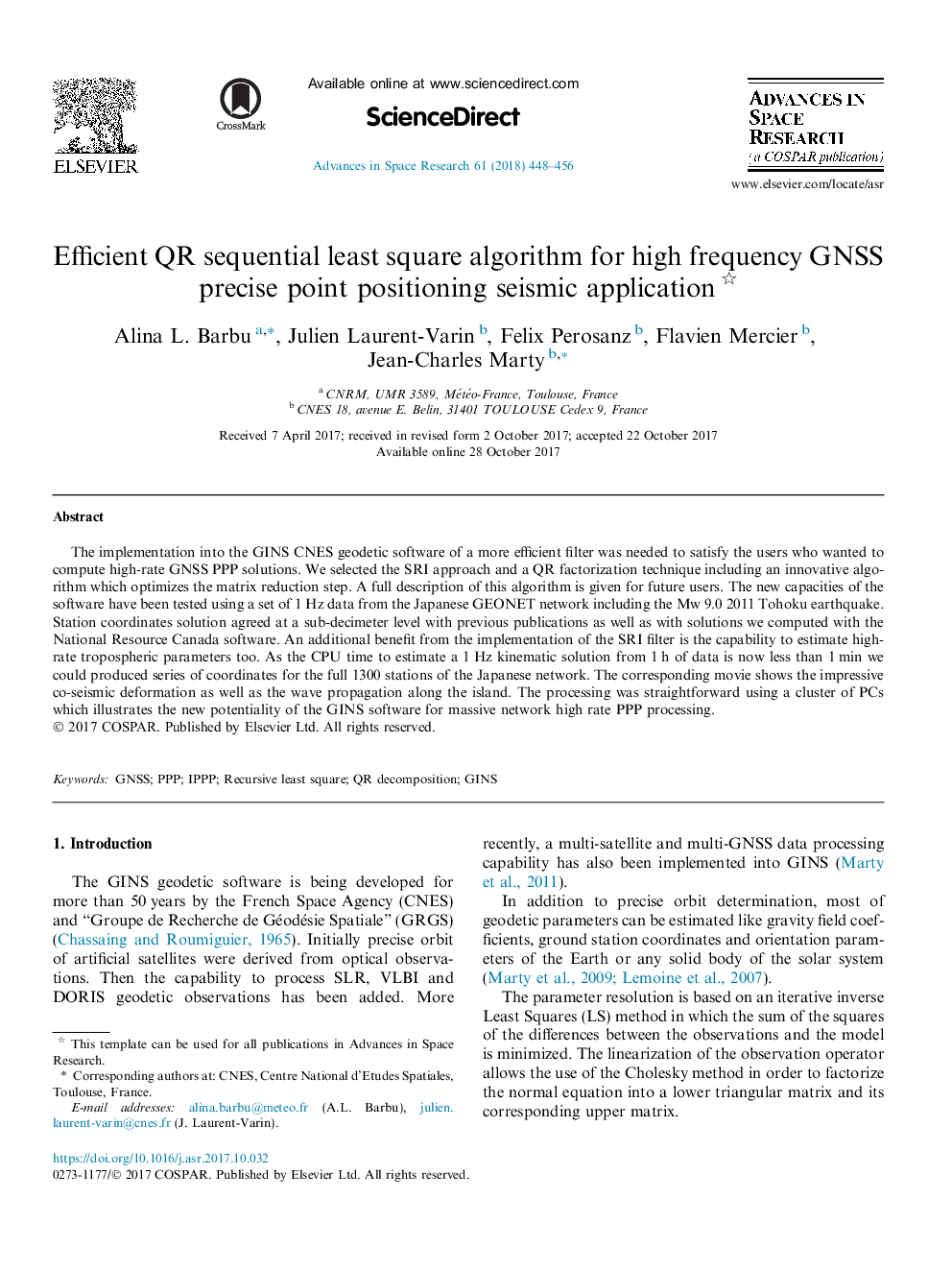| Article ID | Journal | Published Year | Pages | File Type |
|---|---|---|---|---|
| 8132455 | Advances in Space Research | 2018 | 9 Pages |
Abstract
The implementation into the GINS CNES geodetic software of a more efficient filter was needed to satisfy the users who wanted to compute high-rate GNSS PPP solutions. We selected the SRI approach and a QR factorization technique including an innovative algorithm which optimizes the matrix reduction step. A full description of this algorithm is given for future users. The new capacities of the software have been tested using a set of 1â¯Hz data from the Japanese GEONET network including the Mw 9.0 2011 Tohoku earthquake. Station coordinates solution agreed at a sub-decimeter level with previous publications as well as with solutions we computed with the National Resource Canada software. An additional benefit from the implementation of the SRI filter is the capability to estimate high-rate tropospheric parameters too. As the CPU time to estimate a 1â¯Hz kinematic solution from 1â¯h of data is now less than 1â¯min we could produced series of coordinates for the full 1300 stations of the Japanese network. The corresponding movie shows the impressive co-seismic deformation as well as the wave propagation along the island. The processing was straightforward using a cluster of PCs which illustrates the new potentiality of the GINS software for massive network high rate PPP processing.
Related Topics
Physical Sciences and Engineering
Earth and Planetary Sciences
Space and Planetary Science
Authors
Alina L. Barbu, Julien Laurent-Varin, Felix Perosanz, Flavien Mercier, Jean-Charles Marty,
